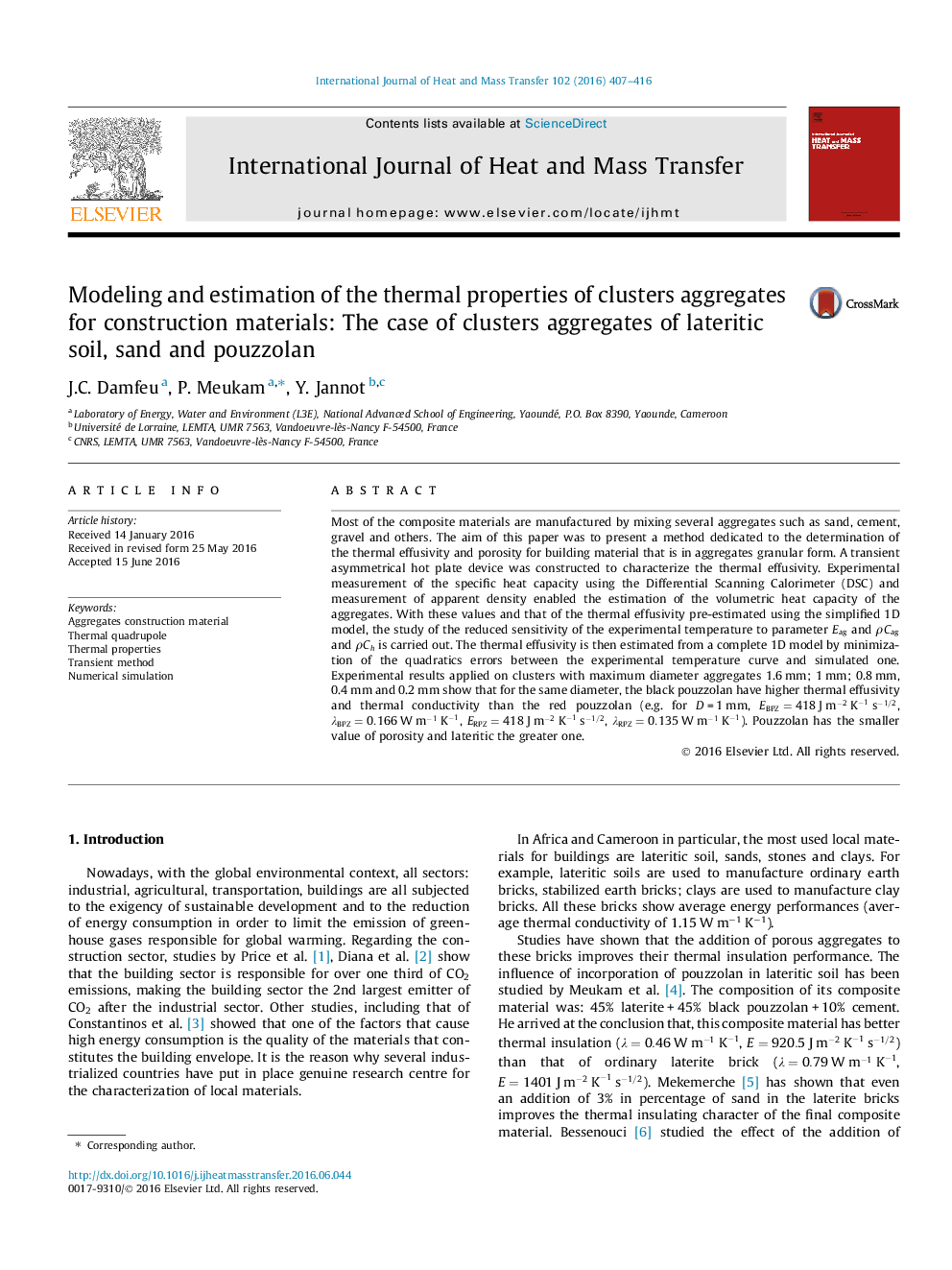| Article ID | Journal | Published Year | Pages | File Type |
|---|---|---|---|---|
| 7055119 | International Journal of Heat and Mass Transfer | 2016 | 10 Pages |
Abstract
Most of the composite materials are manufactured by mixing several aggregates such as sand, cement, gravel and others. The aim of this paper was to present a method dedicated to the determination of the thermal effusivity and porosity for building material that is in aggregates granular form. A transient asymmetrical hot plate device was constructed to characterize the thermal effusivity. Experimental measurement of the specific heat capacity using the Differential Scanning Calorimeter (DSC) and measurement of apparent density enabled the estimation of the volumetric heat capacity of the aggregates. With these values and that of the thermal effusivity pre-estimated using the simplified 1D model, the study of the reduced sensitivity of the experimental temperature to parameter Eag and ÏCag and ÏCh is carried out. The thermal effusivity is then estimated from a complete 1D model by minimization of the quadratics errors between the experimental temperature curve and simulated one. Experimental results applied on clusters with maximum diameter aggregates 1.6 mm; 1 mm; 0.8 mm, 0.4 mm and 0.2 mm show that for the same diameter, the black pouzzolan have higher thermal effusivity and thermal conductivity than the red pouzzolan (e.g. for D = 1 mm, EBPZ=418Jm-2K-1s-1/2, λBPZ=0.166Wm-1K-1, ERPZ=418Jm-2K-1s-1/2, λRPZ=0.135Wm-1K-1). Pouzzolan has the smaller value of porosity and lateritic the greater one.
Related Topics
Physical Sciences and Engineering
Chemical Engineering
Fluid Flow and Transfer Processes
Authors
J.C. Damfeu, P. Meukam, Y. Jannot,
